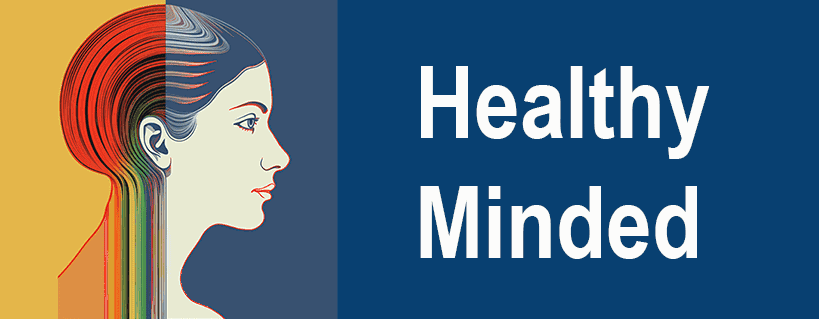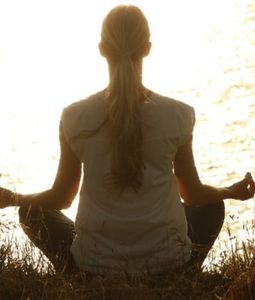
When it comes to relaxation and stress relief, there are a lot of different methods out there. But two of the most popular are hypnosis sessions, meditation, and mindfulness techniques. So, what’s the main difference between these two practices? And which one is right for you?
What is hypnosis, and how does it work?
Hypnosis is an altered state of consciousness facilitated by a practitioner that provides the individual access to deeper mental functioning levels. In this state, the subject can take conscious control over their emotions and behaviors, gain insight into their motivations, and create meaningful change that lasts beyond the experience of hypnosis. It is a natural phenomenon, so it works by bypassing conscious resistance or criticism.
The hypnotic process uses relaxation and conditioning to elicit particular responses from the client while they are in a trance-like state. This includes visualization exercises or direct suggestions to provoke new thought patterns or respond more to external influences such as sound and light therapy.
Though it shares commonalities with meditation, such as concentration on an inner focus or suggestion-based goal-directed behaviors, hypnosis uniquely speaks directly to the subconscious mind to achieve desired experiences more effectively than other mental processes.
Case Study:
Rebecca had always been a confident and outgoing until she moved to a small town in Virginia. She left her home in Los Angeles and all of her friends behind, and suddenly felt overwhelmed by the unfamiliar setting. As if that weren’t enough, Rebecca started having panic attacks whenever she was around people or when someone would try to start a conversation with her.
It wasn’t long before Rebecca’s anxiety began affecting her relationships with others and other areas of her life. After trying many different methods of managing it independently, she finally sought help from a professional hypnotherapist.
The Scientific Case for Meditation and Mindfulness
Employees at Google and Roche who used Headspace for 8 weeks experienced a 46% drop in depression and a 31% drop in anxiety, according to a published study.
Headspace is often ranked as the best meditation app, and it’s not hard to see why. It has a simple, soothing interface and various meditations for different levels and goals.
The hypnotherapist taught Rebecca how to recognize and control the physical sensations associated with anxiety so that they no longer controlled or limited what she could do daily. With this newfound power over herself, Rebecca also learned how to communicate more effectively and make new friends in this strange place she now called home – something that initially seemed impossible!
Thanks to the hypnotherapy for anxiety, Rebecca could regain control of her body and mind. Instead of letting fear dictate where her life went next, she decided for herself which direction it should go – one full of friendship and belonging within an unfamiliar environment!

What is meditation, and how does it work?
Mindfulness meditation is focusing one’s attention on the present moment without judgment. It engages the mind to observe one’s thoughts and feelings, letting them come and go rather than becoming entrenched.
This is different from a hypnotic state or hypnosis which works by a hypnotic state using other hypnotic states, trance states or trance, bypassing the conscious mind and directly making suggestions to the subconscious mind. Meditation works more slowly and with more subtlety than a hypnotic state or meditative states or hypnosis, as it helps create awareness of our thought patterns that can prevent us from responding constructively under challenging situations.

Case Study: Mindfulness meditation (Example, but not a real person!)
John was a software engineer in California for 10 years. It was a great job, and he loved it. But then came 2023 – the big tech decline that changed everything. John’s company went under, and he was one of many employees laid off due to budget cuts.
He felt overwhelmed with stress and anxiety about his future, not knowing what would come next or how to make ends meet without his previous income. He tried looking for new jobs, but nothing seemed like a good fit or even remotely interesting compared to the work he used to do before the layoff.
At this point, John decided to try something different – meditation – to find relief from chronic pain, his overwhelming mental state and clarity for what steps should be taken next in life’s journey. Every morning, no matter how busy or tired he felt, John took out time from
his daily routine for 30 minutes of mindfulness guided meditation practice while listening to soothing music in complete silence with no distractions.
As weeks passed by, John slowly began developing an inner peace within himself, which helped him focus on becoming more creative with solutions rather than worrying too much about outcomes beyond his control. This brought back some hope during hard times.
The newfound peace also allowed him to take action towards achieving what mattered most – finding another job related to software engineering that truly excited him yet challenged him enough so that he could grow professionally while still having enough energy left over each day to enjoy life outside work hours!
Try BetterHelp.com for hypnotherapy.
15% off for Healthy Minded visitors.
After months of searching tirelessly, things started falling into place when John finally got offered a job at a start-up that sounded perfect! He thanked those dedicated moments spent meditating every morning, which gave him the courage to keep moving forward despite the bleak situation.
Through regular meditation, people often find they can take a step back when faced with challenging times, allowing them to maintain composure and make better decisions. Ultimately, meditation helps you not only become aware but also be mindful of your own mental state to develop self-awareness and resilience.
A Note from our publisher, Eric Van Buskirk
Meditation and body scanning are more than just buzzwords; they are potent tools capable of alleviating physical and psychological distress. In my experience, they turned two years of agony into a time of rejuvenation, helping me reclaim my life.

Chronic “muscle-guarding” pain disrupted every aspect of my life. Only a few months ago, I discovered the transformative power of meditation and body scanning. It could have brought relief much sooner had I been guided properly. This approach helped me consciously relax tense muscles, although it might be less effective for others suffering acute injuries.
Despite seeking help from various healthcare professionals, meditation was barely mentioned and remained an untapped resource throughout three painful milestones in my life, including a motorbike accident and severe sprains. The Western medical sphere, primarily influenced by profitability-driven research, often overlooks alternative therapies, leaving consumers unaware of potential relief avenues.
I was initially skeptical of many forms of the power of meditation, especially given my background working with “alternative” supplement companies and witnessing the lack of scientific backing for many products. However, I realized that the deficiency in research does not necessarily denote inefficacy.
We in the West need a shift towards embracing meditation for pain management! Philanthropists, governments, and researchers must promote research in this underfunded area. It is not just a personal testimony but a call for a shift to recognize the potential of alternative medicine in addressing chronic pain through increased awareness and control over our bodies.
I hope that sharing my personal story will underscore that this is not just an academic issue, but a pressing real-life issue affecting many.
The benefits of both hypnosis and meditation for relaxation and stress relief
Hypnotherapy and meditation both offer benefits when it comes to relaxation and finding relief from stress.
- Hypnosis can refine the power of suggestion, allowing a person to enter into a deeply relaxed state, and promoting healing and self-reflection.
- Conversely, meditation is associated with increased concentration and resilience in the face of stress. It harnesses creative visualization to help an individual focus on their goals, ultimately reducing tension and improving overall well-being.
Both the hypnosis-guided meditation sessions and guided meditation alone are effective for managing stress levels and promoting relaxation – it’s simply a matter of discovering which approach works best for each person.
How to choose the right one for you
Both self-hypnosis and other meditation techniques have been known to have tremendous benefits for mental health and wellness. Deciding which will work best for you ultimately comes down to understanding what each modality offers.
- Hypnosis has been used to help people address unwanted behaviors, emotions, thoughts, and habits.
- On the other hand, meditation is an alert form of self-awareness that focuses on building mindfulness and concentration to reduce stress, boost creativity, and cultivate inner peace.
The decision of which modality is best for an individual depends on their needs
and goals. Consider exploring both practices before deciding on one to focus on – understand what you are looking for from either option and how much time you can dedicate to it, then decide.
The best time of day to practice hypnosis or meditation
When wondering about the best time of day to practice hypnosis or meditation, this ultimately comes down to personal preference.
Hypnosis meditation tends to be more effective when practiced in a relaxed and comfortable state, such as first thing in the morning when one is waking from a restful sleep or just before bedtime.
On the other hand, you can meditate both in the morning and evening since it helps reduce stress and relaxes you at any given point throughout the day.
Conclusion
Hypnosis and meditation are excellent relaxation and stress relief methods. Hypnosis and meditation together is a quicker, more effective form of meditation, and hypnosis is deep relaxation because of induces a trancelike state that helps to reduce the body’s stress response while providing a greater sense of control. Meditation involves focusing your mind on calming thoughts and emotions to achieve a more trance-like meditative state or state, a calm and relaxed meditative state or trance state full of the unconscious and subconscious mind.
Both methods provide similar benefits, but people should consider significant differences in their needs when deciding which meditative or meditative practice is best for them. In addition, you should determine what time of day works best for you—some other studies suggest that people prefer mornings or evenings as the ideal environment. With either method and a little practice, you can learn how to relax and let go of stress to create balance in your life.
- Hypnosis vs. Meditation: A Comparison of Two Mind-Body Techniques - March 17, 2023
- Glossophobia: the Fear of Public Speaking - November 12, 2020
- I Write, Therefore I Am: Assistive Technology Bridges The Handwriting Gap - August 2, 2017

